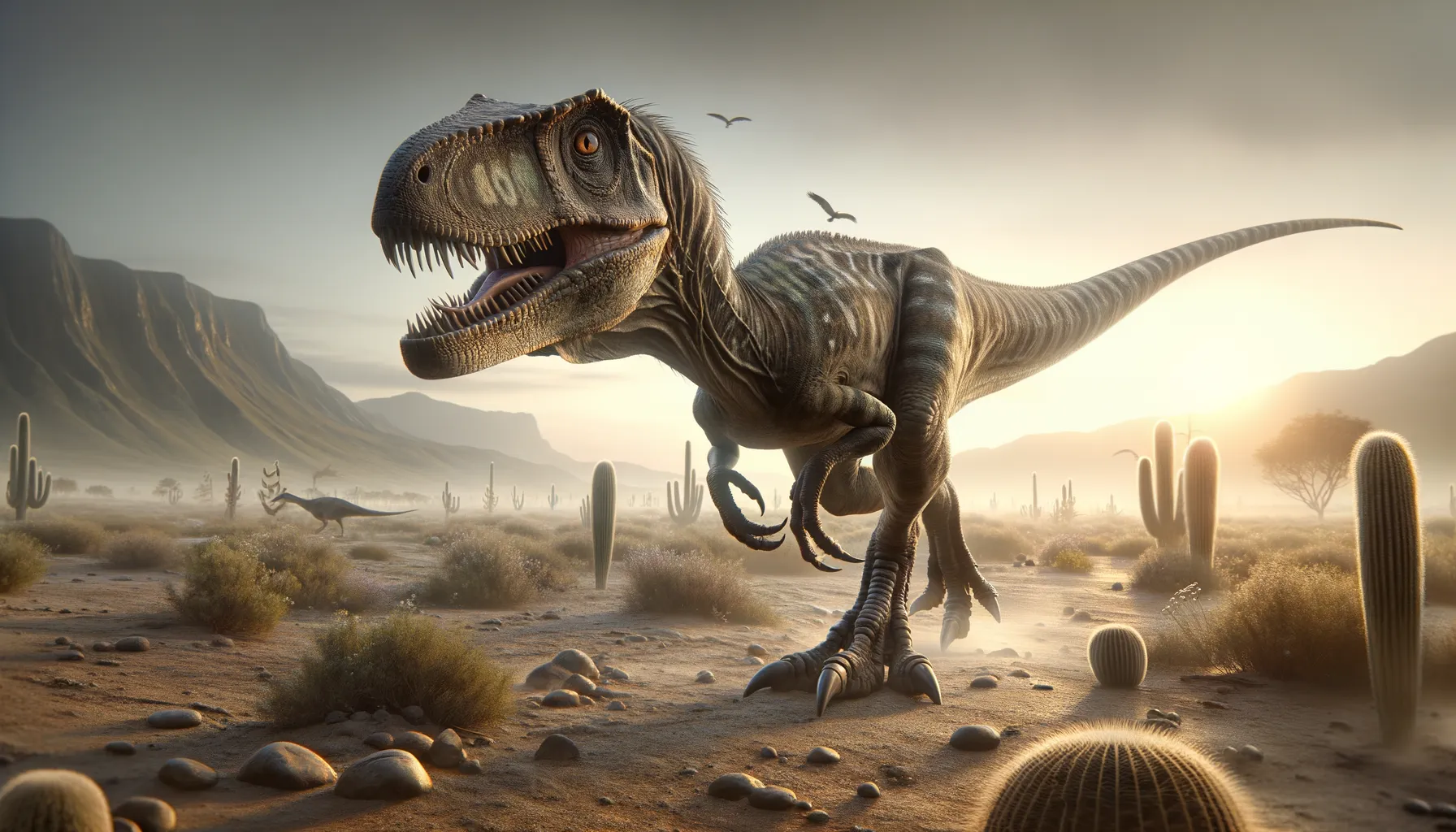
Linheraptor
Fierce predator of Mongolian deserts!
Period
Cretaceous
Length
Roughly 2 meters (6.5 feet) long.
Height
Around 0.9 meters (3 feet) tall.
Weight
Approximately 25 kilograms (55 pounds).
Linheraptor was a small but fierce carnivorous dinosaur that roamed the late Cretaceous period in what is now known as Inner Mongolia. It was a member of the dromaeosaurids, a group closely related to birds, indicating a high degree of agility and intelligence. This predator, known for its speed, was well-equipped with sharp claws and teeth, allowing it to hunt effectively in its environment.
Diet
Linheraptor was carnivorous, feeding on small to medium-sized vertebrates. Its sharp teeth and claws helped it tear into flesh with efficiency.
Hunting
It was likely an ambush predator, using its speed and surprise to catch prey. Its agility allowed it to navigate through complex terrains quickly.
Environmental challenges
Linheraptor had to contend with a semi-arid environment with limited water sources. Sandstorms and fluctuating temperatures posed additional survival challenges. Competition with other predators for scarce resources was fierce and constant.
Speed
Linheraptor was likely quick and agile.
Lifespan
Its lifespan ranged around 15 to 20 years.
First discovery
Discovered in Inner Mongolia in 2008.
Fun Facts
- Linheraptor was a small, fast dinosaur discovered in Mongolia in 2008.
- It belonged to the dromaeosaurid family, which is known for its sickle-shaped claws.
- Linheraptor was a cousin to the famous Velociraptor, sharing similar features and hunting strategies.
- This dinosaur lived approximately 75 million years ago during the Late Cretaceous period.
- With a length of around 6 feet, Linheraptor was about the size of a large dog.
- It is believed to have been a carnivore, preying on smaller animals with its sharp claws and teeth.
Growth and Development
Linheraptor would have hatched from eggs and grown rapidly to reach maturity quickly. Young raptors may have relied on parents or packs for protection and learning as they developed. As they grew, their hunting skills would have been honed to perfection through practice and experience.
Habitat
Linheraptor lived in a dry, desert-like habitat with dunes and sparse vegetation. This environment required efficient adaptations to survive with limited cover and resources. Its habitat offered challenging terrain that it mastered with agility.
Interaction with other species
Linheraptor likely competed with other carnivores for prey. Occasional encounters with larger predators could have led to confrontations or avoidance behaviors. Its role in the food chain also involved interactions with potential prey species, who evolved their own defense mechanisms.
Natural lifespan
A Linheraptor's natural lifespan spanned 15 to 20 years.
Reproduction
Linheraptors laid eggs and likely engaged in some form of parental care. They may have nested in hidden areas to protect their young from predators. Reproductive behaviors involved finding suitable partners and defending territories.
Social behaviour
Linheraptor may have lived and hunted in small groups, increasing success rates. Social interactions would have been crucial for communication, especially during hunting. Group living also provided safety in numbers from larger predators.
Fossil locations
Fossils of Linheraptor have been unearthed in Inner Mongolia. These discoveries have contributed to understanding its anatomy and behavior. Fossil sites reveal insights into the environment and ecosystem dynamics of its era.
